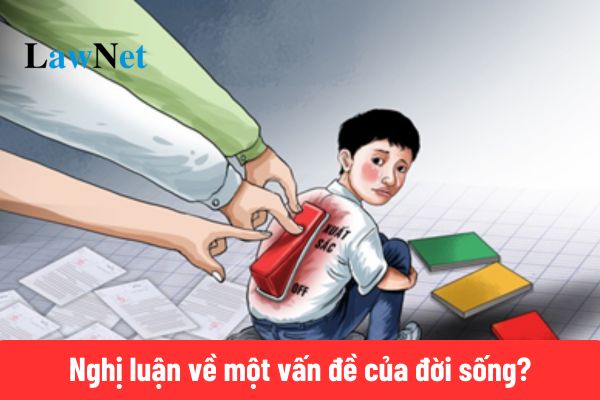What are the sample argumentative essays on arbitrary behavior in traffic participation for 8th-grade students in Vietnam? How many assessment levels are there for 8th-grade students in Vietnam?
What are the sample argumentative essays on arbitrary behavior in traffic participation for 8th-grade students in Vietnam?
8th-grade students may refer to the following sample argumentative essays on arbitrary behavior in traffic participation:
Sample 1:
| For each person, participating in traffic is an indispensable part of daily life. But let's ask ourselves, on those times out on the road, have we strictly adhered to traffic laws? Have you ever witnessed someone deliberately running a red light, driving in the wrong lane, or even speeding recklessly, ignoring all warnings? These actions are not only a lack of consciousness but also put themselves and those around them in dangerous situations. In reality, arbitrariness in traffic is becoming a pressing issue, threatening not only the safety of individuals but also seriously affecting the overall safety of society. According to statistics from the Traffic Police Department, in 2024, nationwide, there were more than 16,000 traffic accidents, causing nearly 7,000 deaths and nearly 13,000 injuries. Notably, violations such as running red lights, driving in the wrong lane, and not wearing helmets account for up to 60% of total accidents. These behaviors not only increase accident risks but also cause severe traffic congestion, affecting people's quality of life. Running red lights is one of the main causes leading to accidents. Despite the traffic signal turning red, many people do not stop, even trying to hurry through, disregarding the danger. This is an extremely dangerous act, especially at busy intersections. Recently, in Ho Chi Minh City, a tragic accident occurred simply because a vehicle ran a red light, resulting in two deaths. In addition, not wearing helmets when participating in traffic is also a dangerous habit of many people. Despite mandatory regulations, this situation is still prevalent, especially in rural or suburban areas. According to a survey by the Ministry of Transport, about 45% of motorbike users do not wear helmets, putting them at several times greater risk in accidents. To address this situation, each citizen needs to raise awareness, strictly comply with traffic laws, not run red lights, not use phones while driving, and especially always wear helmets when riding motorcycles. Furthermore, relevant authorities need to strengthen strict penalties for violations and promote traffic safety awareness campaigns. Only when each individual is conscious and responsible in traffic participation can we reduce traffic accidents. That is also the way to build a safe and civilized traffic environment. |
Sample 2:
| Surely all of us have witnessed a motorbike rushing to run a red light while hundreds of other vehicles stop, or people carelessly crossing road markings as if there were no lanes. These actions, seemingly trivial, contribute to creating traffic "disasters." Arbitrariness in traffic participation, even small actions, can lead to severe consequences, not only affecting violators but also the lives of thousands of others. This lack of consciousness is increasingly rising, becoming a pressing issue that we cannot ignore. Traffic is always a crucial factor in the development of society, and every citizen has a duty to participate responsibly. However, the phenomenon of a segment of the population participating arbitrarily in traffic is becoming increasingly common, leading to many serious consequences. This not only causes traffic accidents but also disrupts order and efficiency in traffic management. One common behavior is driving in the wrong lane. Despite clear signs and road markings, many still ignore and intentionally drive in the wrong lane, especially during peak hours. According to statistics from the National Traffic Safety Committee, in 2023, up to 25% of traffic accidents occurred at intersections, most due to violations like driving in the wrong lane and running red lights. Another very dangerous behavior is using phones while driving. This is a major cause of traffic accidents, especially when drivers are not paying attention and fail to react to unexpected situations. According to a WHO study, using phones while driving increases the risk of accidents threefold. Yet, many participate in traffic in this state. Moreover, not wearing helmets while riding motorbikes is a hazardous habit, although the law is clear on this requirement. According to the Traffic Police Department's report, about 30% of traffic-related fatalities are due to not wearing helmets. This alarming number necessitates decisive solutions for improvement. To remedy this situation, besides enforcing stricter penalties, there must be educational measures to raise public awareness about adhering to traffic laws. Authorities need to firmly handle traffic violations and intensify traffic safety advocacy campaigns, especially among the younger generation. If every citizen clearly recognizes the importance of abiding by traffic laws, traffic accidents will significantly reduce, contributing to a civilized and safe society. |
Sample 3:
| Every year, thousands of traffic accidents happen, claiming thousands of lives and causing immeasurable damage. What causes these numbers to keep rising? One of the main reasons is the arbitrary participation in traffic by a segment of the population. Although authorities have implemented many measures, disregard for the law occurs daily. Perhaps now we must ask ourselves: Can our society truly reduce traffic accidents when a portion of participants' awareness remains unchanged? According to reports from the Traffic Police Department, in 2024, traffic accidents increased by 15% compared to the previous year, with over 6,500 deaths and more than 12,000 injuries. One of the causes of this is behaviors such as running red lights, wrong lane usage, not wearing helmets, and using phones while driving. Studies show traffic accidents frequently occur during rush hours when people tend to rush and disregard traffic rules. A common but very dangerous behavior is running red lights. Although the traffic light system has been improved and installed on many roads, many participants still intentionally violate it. This situation is particularly serious at intersections, where traffic is busy and complex. A report by the Transport Research Institute shows that 35% of accidents at intersections are due to running red lights. Using phones while driving is also a harmful habit many people have. When using the phone, drivers cannot focus on vehicle control, reducing reaction capability in unexpected situations. A study by the Transport Research Institute shows that using phones while driving increases the risk of accidents by up to 50%. Furthermore, not wearing helmets while riding motorbikes is a very common violation, even though authorities have mandated it. According to statistics from the Ministry of Transport, annually, more than 40% of fatalities in motorcycle-related accidents are due to not wearing helmets. To mitigate this situation, first and foremost, every traffic participant must enhance awareness, strictly adhere to legal regulations. Authorities should continue to enforce public awareness and strictly handle violations. Only when every citizen takes responsibility in traffic participation can the incidence of traffic accidents be reduced. |
*Note: The information is for reference only./.

What are the sample argumentative essays on arbitrary behavior in traffic participation for 8th-grade students in Vietnam? How many assessment levels are there for 8th-grade students in Vietnam? (Image from the Internet)
How many assessment levels are there for 8th-grade students in Vietnam?
Under Clause 2, Article 9 of Circular 22/2021/TT-BGDDT, the assessment levels for 8th-grade students include:
1) Excellent:
- All subjects assessed with feedback are placed in Qualified category.
- All subjects assessed by both feedback and scores have minimum scores of 6.5 for DTBmhk and DTBmcn with 6 subjects among which have minimum scores of 8.0 for DTBmhk and DTBmcn.
2) Good:
- All subjects assessed with feedback are placed in Qualified category.
- All subjects assessed by both feedback and scores have minimum scores of 5.0 for DTBmhk and DTBmcn with 6 subjects among which have minimum scores of 6.5 for DTBmhk and DTBmcn.
3) Qualified:
- Have no more than 1 subject assessed via feedback placed in Unqualified category.
- At least 6 subjects assessed by both feedback and scores have minimum scores of 5.0 for DTBmhk and DTBmcn with 0 subjects have scores lower than 3.4 for DTBmhk and DTBmcn.
4) Unqualified: Remaining cases.
What are the regulations on the number of regular assessments for 8th-grade students in Vietnam?
Pursuant to Clause 2, Article 6 of Circular 22/2021/TT-BGDDT, the number of regular assessments for 8th-grade students per semester is regulated as follows:
- For subjects where assessment is conducted via feedback (does not include learning topics): choose twice each semester.
- For subjects where assessment is conducted via both feedback and scores (does not include learning topics), choose regular assessment scores (hereinafter referred to as “DDGtx”) in each semester as follows:
+ Subjects that have 35 periods/school year: 2 DDGtx.
+ Subjects that have from more than 35 periods/school year to 70 periods/school year: 3 DDGtx.
+ Subjects that have more than 70 periods/school year: 4 DDGtx.










- What are the answers to the 3rd-week examination of the "Learn about the History of Provincial CPV Committee and the History of Thai Binh Province" Contest 2025?
- What is the link for watching the live stream of Grammy 2025? What is the number of lessons for Music according to the General Education Program 2018 in Vietnam?
- What are the 05+ sample 400-word essays on a personal experience? What are the experiential activities for primary school students in Vietnam?
- What are the preschool education management activities in Vietnam?
- Are extra classes for primary school students allowed in Vietnam?
- What are the 3+ sample speeches for the 95th anniversary of the founding of the Communist Party of Vietnam? What are the assessment criteria for Communist Party members who are teachers in Vietnam?
- What are the 6+ sample creative essays on a story with the main character being an animal or object? How many assessment levels are there for primary school students in Vietnam?
- What are the 5+ sample essays retelling a good deed you have done or witnessed about friendship? What are the regulations on the manners of 5th-grade students in Vietnam?
- Vietnam: What are the Top 3 sample argumentative essays on indifference and lack of responsibility towards one's dreams?
- What are the sample essays on your activities with family during the Lunar New Year? What are the regulations on the manners of primary school students in Vietnam?

